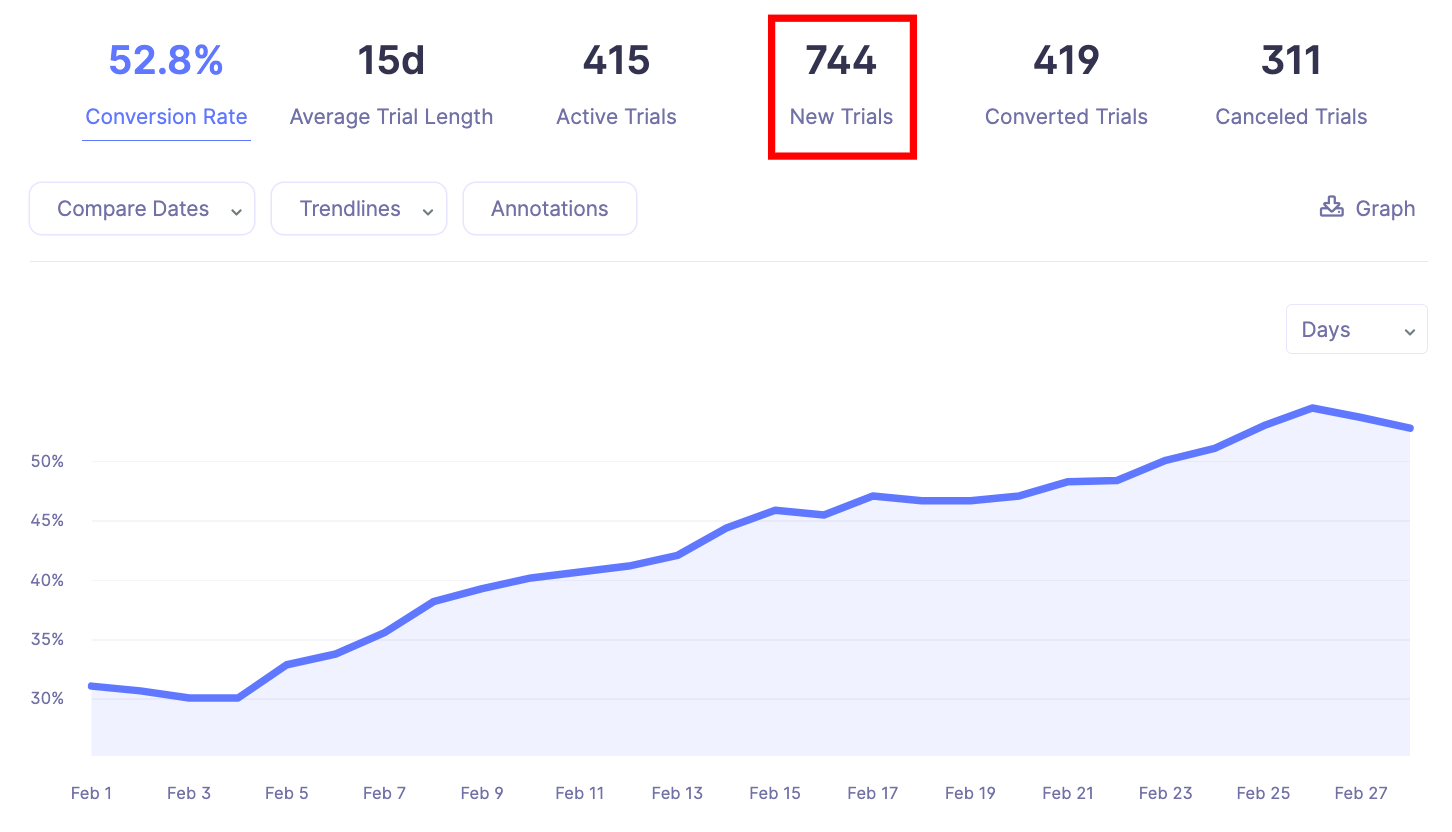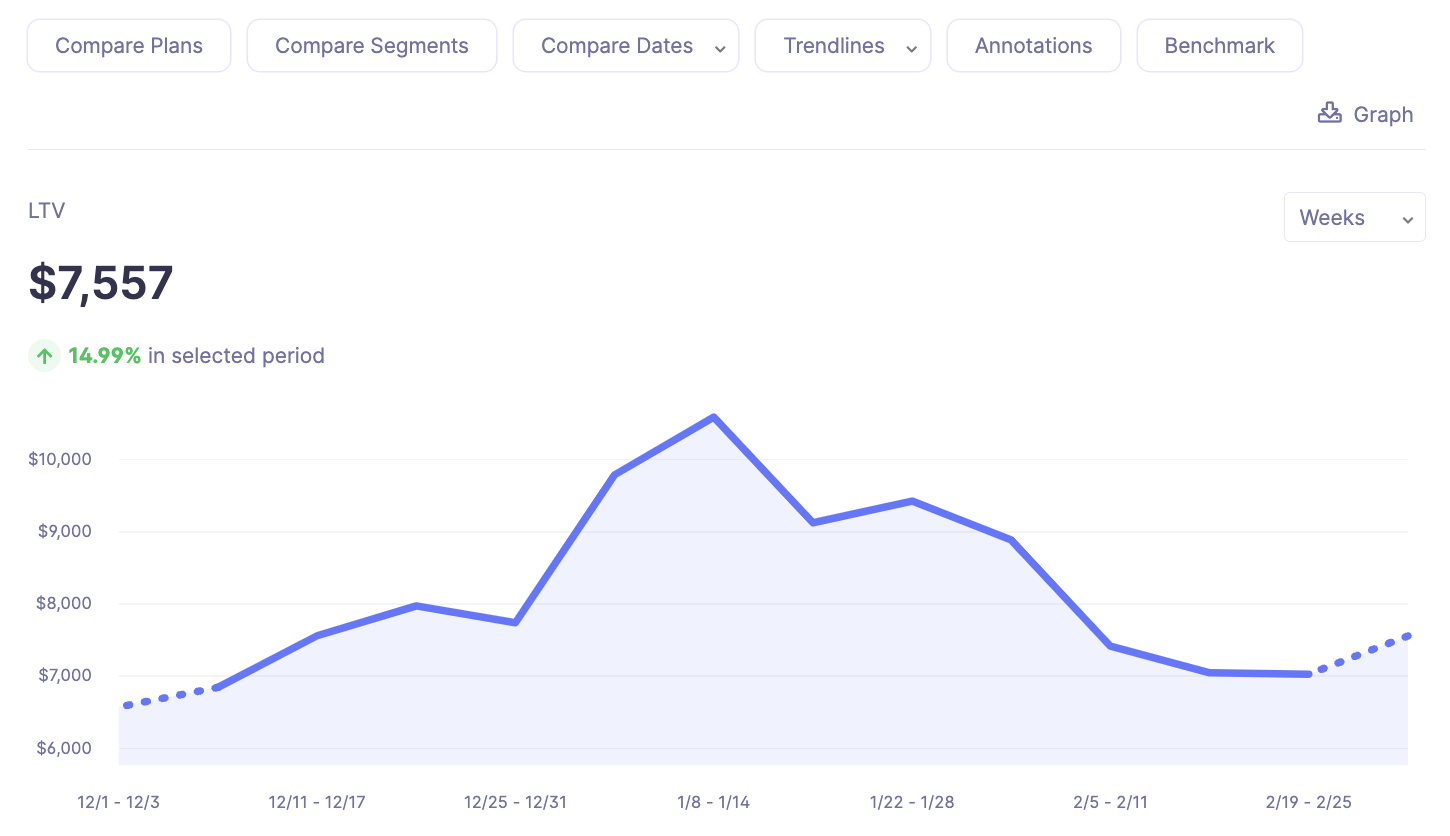Table of Contents

Most companies today recognize the value of data for making better business decisions. However, it can be overwhelming to get started. The key is choosing the right metrics to track for your business without amassing too much data to analyze.
In this guide, we’ll explore ten essential SaaS reporting metrics for subscription companies to track if they want to harness data to improve their business performance.
How to Choose SaaS Reporting Metrics
There are hundreds of metrics out there that many businesses track, but not all of them are relevant to SaaS companies. Even the list of metrics that are relevant to SaaS companies is often too long to be practical.
That’s why every company should choose metrics that align with their business goals. By avoiding the mistake of tracking too many SaaS metrics, you’ll be able to dive deeper into the data and actually take action on it.
10 Essential Metrics for SaaS and Subscription Companies
Now that we’ve discussed why it’s important to focus your analysis and reporting efforts on the most relevant data, here are ten metrics most SaaS and subscription businesses should track.
1. Trial Conversion Rate
Trial conversion rate is the number of free trial users that become paying subscribers within a given period of time. This is one of many metrics that our Trial Insights tool tracks to help you understand the performance of your free trials.
A poor trial conversion rate often suggests that users are either dissatisfied with your product or aren’t convinced that it’s worth the amount you’re charging for a full subscription. Digging deeper into your trial conversion rate can pinpoint these issues and help you improve the trial and platform experience.

Track trial conversion rate in Baremetrics.
2. New Trial Sign-Ups
The number of sign-ups for free trials is another important metric for understanding the performance of your trials. It’s great if your trial conversion rate is high, but if there aren’t a lot of prospects signing up for trials in the first place, it’s still not going to lead to a ton of new subscriptions.
A low amount of new trial sign-ups, therefore, could indicate to SaaS companies that they need to invest more in marketing and sales efforts related to their free trial program.

Track new trials in Baremetrics.
3. Number of Active Users
The number of active users—whether it’s daily active users (DAU) or monthly active users (MAU)—is the number of users that have interacted with your product within a given period of time.
MAU reveals the overall health of your business because a drop in active users could be a leading indicator of churn. The ratio between DAU and MAU can also measure “stickiness” or how many users consistently return to your product.

4. Churn Rate
Churn rate is the number of customers or the amount of revenue that was lost in a given period of time. Every company has some degree of churn, but it’s an important metric to track and reduce because it has a huge impact on business growth. Churn negatively impacts recurring revenue, customer lifetime value, and many other SaaS metrics.

User churn represents the rate that customers cancel their subscription to your service.
5. Monthly Recurring Revenue
Monthly recurring revenue (MRR) is all recurring revenue normalized into a monthly amount so that it’s a consistent number SaaS companies can track over time.
This is arguably the most important SaaS metric because its increases and decreases are key indicators of the health and growth of a business.

Unless you provide some context, metrics like MRR are just numbers. Above we compare our MRR from two different time periods to compare the growth rate at a high-level.
6. Annual Recurring Revenue
Annual recurring revenue (ARR) is similar to MRR, but it’s the total forecasted revenue for the entire year rather than a monthly amount. This metric is usually based on year-long and multi-year contracts, though the calculation can vary for different businesses.
ARR is helpful for understanding the current state of a subscription business as well as its potential profit in the future.

Track ARR in Baremetrics.
7. Customer Acquisition Cost
Customer acquisition cost (CAC) is the average amount spent on marketing, advertising, sales, and other expenses to bring in a new customer. This metric is helpful for SaaS companies to determine how much they should invest in attracting new customers, especially when they compare it to the customer lifetime value metric.
8. Customer Lifetime Value
Customer lifetime value (CLTV) is an estimate of the amount of revenue that a customer will bring in throughout their entire relationship with the business.
SaaS companies should track the lifetime value of their customers and ensure it’s higher than their average customer acquisition costs. Otherwise, a poor CAC-CLTV ratio indicates the amount the business is spending on attracting new customers is negatively impacting profitability.

9. Customer Retention Rate
Customer retention rate is the percentage of customers that stay with your business for a given period of time, which is the opposite of churn.
A high customer retention rate is crucial for the long-term sustainability of a SaaS business because it’s typically more expensive to acquire customers than to retain them. Retaining customers also leads to a greater customer lifetime value over time.
10. Cancellation Reason
For those customers that do churn, it’s important to understand why they’ve chosen to cancel their subscriptions. Their cancellation reason isn’t exactly a metric, but it’s still essential for SaaS companies to track so that they can reduce their churn rate.
Baremetrics Cancellation Insights can help you capture customer feedback so you can understand their reason for saying goodbye. You can then send them automated emails to try to win them back.

A customizable “Reason for Cancellation” form that you can embed into your app or send over email. Through this automated survey, you can gather the data about why your customers cancel before they cancel- and tailor your outreach better.
How Baremetrics Helps
Baremetrics is a dunning, engagement, and subscription analytics platform that helps SaaS companies not only track metrics, but also take action on them. The platform provides Smart Dashboards that make it easy to dive into the metrics most relevant to your business. It also tracks 26 essential metrics for SaaS businesses, including the ones listed above.
In addition, data augmentation with Baremetrics can merge external data with your metrics for even deeper insights. You can connect with Zapier, import CSVs, or use the Baremetrics API to bring in your third-party data. As a result, you’ll be able to get a more holistic view of your business on a single platform.
Email reports also help you stay on top of your Baremetrics data. You can find out what’s going on with your SaaS business at any time and see any trends your metrics may reveal. This enables you to make timely, data-driven decisions that bring you closer to your goals.
There are also useful automated features like Recover, which can help you recover revenue that would have been lost due to failed customer payments. On average, this Baremetrics capability pays for itself 38 times over.
Track the SaaS Reporting Metrics That Matter With Baremetrics
As you can see, there’s so much data available to SaaS and subscription businesses. Focusing your subscription analytics on the metrics that matter most for your SaaS company is the best way to see results.
By tracking SaaS metrics with Baremetrics, you’ll be able to make data-driven decisions that propel your business forward. Ready to take your SaaS reporting to the next level? Sign up for a free trial of Baremetrics today.




